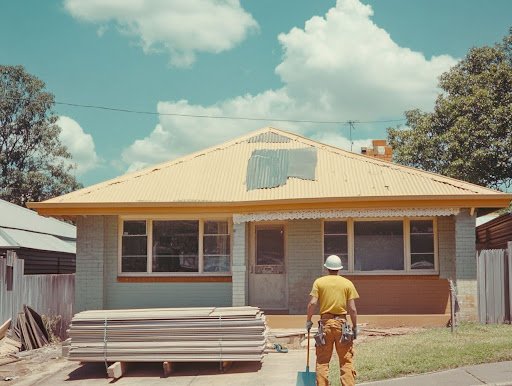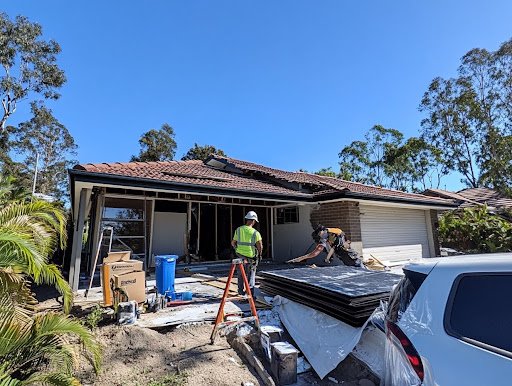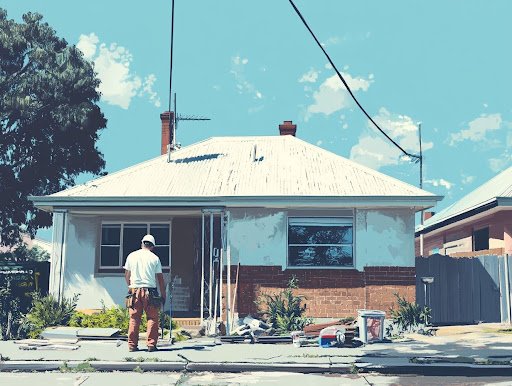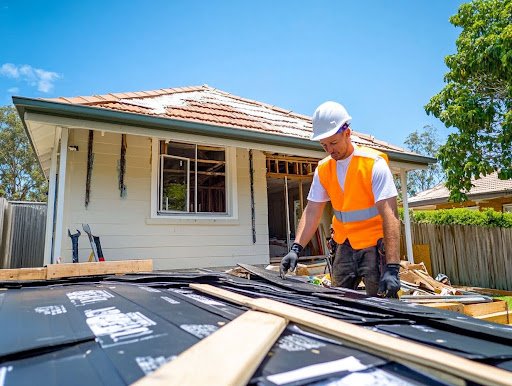How Much Does Roof Replacement Cost in Brisbane?
- Trusted Roofing Professionals Brisbane
- Free Quotes Available
- Contact Us Now
Replacing a roof represents a considerable investment for homeowners in Brisbane, making it essential to understand the factors that influence associated costs to make informed decisions. Several elements contribute to the overall expense, including the size and type of roofing material, the pitch of the roof, and its accessibility. This guide provides a comprehensive overview of average costs in Australia, labour and material expenses, and additional considerations, assisting homeowners in navigating the complexities of roof replacement while ensuring they select the appropriate roofing contractor for their needs.
Key Takeaways:
- The roof replacement cost in Brisbane is affected by factors such as roof size, type of roofing materials, pitch, accessibility, and existing damage.
- The average roof replacement cost in Brisbane ranges from $8,000 to $20,000, depending on the size and type of roofing material.
- Additional costs to consider when getting a roof replacement in Brisbane include roof insulation, gutter replacement, and skylight installation.
Factors that Affect the Cost of Roof Replacement in Brisbane
When contemplating a roof replacement in Brisbane, several factors significantly influence the overall roofing costs, which can vary considerably based on the specific circumstances of the property. A comprehensive understanding of these factors will aid in budget preparation and ensure the selection of an appropriate roofing contractor to address specific requirements, considering cost estimation and budget considerations.
Key elements such as the roof size, the type of roofing materials selected, the complexity of the roofing design, and local labour costs are critical in determining the final price. Furthermore, considerations regarding existing damage, roof accessibility, and insulation needs must also be considered.

Roof Size
The roof size is a critical factor directly influencing the overall costs associated with roof replacement in Brisbane.
Understanding how roof size is measured is essential for homeowners considering a roofing project and average roof replacement costs. Roof size is typically calculated in square metres, encompassing the roof surface’s area and design complexities. In Brisbane, average roof sizes range from 150 to 350 square metres, and this measurement can significantly impact the final cost, particularly if premium materials or intricate designs are selected.
When evaluating roofing costs, it is crucial to consider the size and how specific materials may increase expenses. For instance:
- A larger roof measuring 300 square metres with a relatively flat design may cost between £15,000 and £25,000.
- Conversely, a more complex roof of the same size, featuring gables and multiple sections, could cost £30,000 or more.
As such, individuals contemplating a roof replacement should thoroughly assess the size and complexity of their specific roofing requirements to gain a comprehensive understanding of the anticipated costs involved.
Type of Roofing Material
Selecting the appropriate roofing material is crucial for both the aesthetic appeal and functionality of your roof replacement project, especially when considering metal roofing, concrete roof tiles, and terracotta roof tiles.
When contemplating a roof replacement, the choice of materials not only affects the visual appeal of your home but also plays a significant role in its durability and maintenance requirements. Various options are available, each with distinct characteristics and cost implications that must be considered.
For instance, metal roofing is well-regarded for its longevity and resistance to severe weather conditions, making it an appealing option for homeowners seeking enduring protection. Conversely, concrete and terracotta roof tiles provide exceptional insulation; however, their weight can impose additional structural demands.
On the other hand, asphalt shingles are favoured for their affordability and ease of installation. Yet, due to wear and tear, they may necessitate more frequent replacements over time, impacting average pricing and cost estimation. Therefore, understanding how these roofing materials align with your architectural style and budget is essential in decision-making.
- Metal Roofing: Long-lasting and weather-resistant.
- Concrete Roof Tiles: Excellent insulation, but heavier.
- Terracotta Roof Tiles: Aesthetic appeal and durability.
- Shingles: Cost-effective but less durable.
Roof Pitch
Roof pitch, which refers to a roof’s steepness, plays a significant role in determining the complexity of a roofing project and, subsequently, the associated costs.
Various roof pitches present distinct challenges for roofing contractors, influencing the overall project cost. For example, a low-pitched roof, typically defined as having a slope of 2:12 or less, may require less labour and expertise than a steeply pitched roof, which exceeds a 6:12 slope. Contractors often charge more for projects involving steep roofs due to increased risk and the necessity for specialised safety equipment.
- Low Pitch (2:12 to 4:12): Generally easier to work on, resulting in lower labour costs.
- Medium Pitch (4:12 to 6:12): Requires moderate skill and may incur average labour expenses.
- Steep Pitch (6:12 and above): This involves heightened safety considerations and specialised techniques, which can lead to increased costs.
Homeowners should consider these factors when budgeting for their roofing projects, as the pitch impacts labour intensity, materials, and installation methods, particularly in contemporary house designs.
Roof Accessibility
The accessibility of a roof significantly affects the duration and cost of a roof replacement project, especially when additional services like roof insulation and ventilation are involved.
Several factors must be considered when evaluating roof accessibility. For instance, surrounding structures, such as neighbouring buildings or large trees, may obstruct access routes, complicating the logistics of delivery and installation. Additionally, the overall property layout, including narrow driveways or congested gardens, can limit the movement of essential equipment and personnel, leading to inefficiencies throughout the project.
In situations where access is particularly challenging, labour costs may increase due to the necessity for additional manpower or specialised equipment. These complications can considerably extend project timelines, resulting in both inconvenience and heightened financial burdens for homeowners.
Existing Damage or Issues
Pre-existing damage or structural issues with a roof can significantly increase the costs associated with a roof replacement, including the need for roof removal and asbestos removal.
It is imperative to understand that such issues may lead to unforeseen expenses, often requiring immediate and professional intervention. During the roof removal, a comprehensive inspection is essential to identify hidden problems, such as water damage or compromised support beams. Once these issues are identified, repairs become critical and may include:
- Replacement of damaged plywood or sheathing
- Reinforcement of rafters or trusses
- Addressing leaks or the installation of new flashing
Each service contributes to the overall expenditure, with repair costs potentially adding thousands to the initial budget. Therefore, addressing these concerns promptly during the removal process protects the structure and mitigates the risk of larger expenses in the future, ensuring a solid foundation for the new roof.

Average Cost of Roof Replacement in Brisbane
When considering roofing projects in cities like Brisbane and Perth, consulting with experts such as Trevor Marshall from Five Star Roofing can provide invaluable insights.
Various factors influence Brisbane’s average roof replacement cost, leading homeowners to anticipate expenses ranging from several thousand to tens of thousands of pounds, contingent upon their specific requirements.
This cost variation is affected by several considerations, including the property size, the complexity of the roof design, and the materials chosen for the project. Homeowners should recognise that the type of roofing material selected can significantly impact overall costs.
- Metal roofing: Typically ranges from £15,000 to £30,000 for an average-sized residential property.
- Tiled roofing: The cost generally falls between £10,000 and £25,000, depending on the quality of the tiles and the installation process.
- Shingle roofing: Average expenses for this option usually range from £5,000 to £15,000.
These averages reflect broader roofing costs across Australia, where quality, durability, and aesthetic appeal significantly influence the choice of specific roofing materials.
Cost Breakdown of Roof Replacement in Brisbane
A comprehensive understanding of the cost breakdown for a roof replacement in Brisbane and other parts of Australia is essential for homeowners to effectively budget and anticipate any expenses that may arise throughout the project.
Labour Costs and Roof Complexity
Labour costs constitute a substantial portion of the overall expenditure associated with roof replacement in Brisbane, with variations dependent on the roofing contractor’s experience and the project’s complexity.
These costs may also be influenced by the materials used, the roof’s size, and the city’s location. For example, roof replacements involving high-quality materials or specialised techniques typically require a more skilled labour force, increasing overall expenses. A comprehensive assessment of the existing roof and any potential repairs needed will further affect labour quotations.
Homeowners must recognise that while opting for a lower-cost option may be tempting, engaging a qualified roofing contractor can significantly impact the completion of the work to high standards. Several factors warrant consideration:
- Experience and qualifications of the contractor
- Type of roofing materials, such as Colorbond and other options
- Project size and scope
- Local labour market conditions in Brisbane and Perth
Investing in skilled professionals ensures quality workmanship and enhances the longevity and durability of the roof, ultimately resulting in cost savings over time.
Materials Costs
The selection of roofing materials significantly determines the costs associated with a roof replacement project.
A comprehensive understanding of the various options available enables homeowners to make informed decisions that effectively balance aesthetics, durability, and cost. When considering roofing options, assessing the overall investment against potential maintenance and energy efficiency savings is crucial.
- Metal Roofing: Renowned for its longevity, metal roofing typically incurs an initial cost ranging from £100 to £300 per square, depending on the specific type and finish. With a 40 —to 70-year lifespan, it represents a valuable consideration for homeowners.
- Concrete Tiles: Combining durability with style, concrete tiles generally cost between £300 and £500 per square. Although the initial investment is substantial, these materials can last over 50 years. They are available widely in Australia, including Brisbane and Perth.
- Terracotta Tiles: As a traditional choice that offers excellent insulation, terracotta tiles are usually priced between £500 and £700 per square, reflecting their distinctive aesthetic attributes, popularised by companies like Five Star Roofing.
- Asphalt Shingles: More economical, asphalt shingles range from £90 to £100 per square; however, their lifespan is comparatively shorter, typically lasting around 20 to 30 years.
In conclusion, evaluating the costs, longevity, and associated benefits of these roofing materials is essential in selecting the most suitable option for one’s home.
Permit Costs
Obtaining the necessary building permits can contribute to the overall costs associated with roof replacement in Brisbane.
Before initiating a roofing project, homeowners must understand the specific permit requirements established by local authorities. In Brisbane, the process typically begins with assessing the proposed work to ascertain whether it qualifies as basic repairs or necessitates a complete overhaul that requires permits.
Homeowners are advised to:
- Consult with the Brisbane City Council regarding zoning laws and regulations.
- Submit the requisite documentation, including plans and specifications.
- Pay any applicable fees, which may vary based on the extent of the work undertaken.
Once the submissions have been processed, securing the necessary final approvals to commence work may take several weeks, underscoring the importance of planning for any scheduled roofing projects.

Waste Disposal Costs
Waste disposal costs should be carefully considered when calculating the total expenses associated with roof replacement.
Effective waste disposal management is essential during the roof removal, as it significantly affects both environmental outcomes and the homeowner’s financial planning. Failing to account for the volume of old roofing materials accurately may result in unexpected expenses and delays in the project timeline. Many roofing services provide comprehensive solutions that include efficient disposal of materials, such as old tiles or underlay, which can accumulate rapidly during a roof replacement.
Consider the following points:
- Utilising recycling services for asphalt tiles minimises landfill waste and reduces overall costs.
- Engaging a professional service to handle disposal ensures compliance with local regulations, avoiding potential fines.
- Understanding the associated costs in advance facilitates better budgeting, helping homeowners to prevent last-minute financial surprises.
One can achieve a more streamlined and cost-effective roofing project by proactively addressing waste disposal.
Additional Costs to Consider
Along with the primary costs associated with roof replacement, homeowners in Brisbane should be aware of potential additional expenses that may arise during the project.
Roof Insulation
Roof insulation is a critical component that can enhance energy efficiency and comfort within a home; however, it also represents an additional expense during roof replacement.
Homeowners can substantially reduce their heating and cooling costs by investing in high-quality insulation materials. Properly insulated roofs are crucial in maintaining a consistent indoor temperature, resulting in a more comfortable living environment throughout the year.
- In the colder months, insulation effectively prevents heat from escaping, allowing the home to remain warm without placing excessive strain on the heating system.
- It reflects heat away from the interior during the summer, minimising reliance on air conditioning.
While the initial cost may appear significant, astute homeowners often discover that the long-term energy savings can offset these expenses. Furthermore, many regions provide tax incentives or rebates, making the initial investment more feasible.
Roof insulation contributes to sustainable living practices and enhances a property’s value, making it an essential consideration for roofing projects.
Gutter Replacement
Gutter replacement represents an additional expense many homeowners may encounter during a roof replacement project.
Gutters are essential components of the roofing system. They direct water away from the home, preventing damage to the foundation and landscaping. Various issues can arise during roofing work that require gutter replacement, especially if they are old, rusted, or misaligned.
Homeowners should carefully assess the condition of their gutters when planning for this essential maintenance, as neglecting this aspect can lead to significant repair costs in the future.
- The average gutter replacement cost typically ranges from £4 to £30 per linear foot.
- If a homeowner is replacing roofing and gutters, it is often advisable to undertake both projects simultaneously to optimise labour costs.
Evaluating the necessity of gutter replacement in conjunction with roofing work can enhance the overall effectiveness of the roofing system. As Trevor Marshall from Brisbane might advise, combining these tasks can lead to more efficient project management.
Skylight Installation
Installing a skylight can significantly enhance a residence’s aesthetic appeal and natural lighting; however, it also introduces additional costs to the roof replacement project.
When deliberating on this addition, homeowners should recognise that skylight installation can substantially improve their living spaces’ ambience and energy efficiency. By permitting an increased influx of sunlight, skylights can create a brighter environment, diminish the reliance on artificial lighting, and, as a result, contribute to lower energy bills.
Integrating a skylight into roofing designs can elevate a home’s overall architectural style. Modern roofing techniques facilitate seamless installation that complements a range of design styles, whether contemporary or traditional.
The benefits of skylights include:
- Increased natural light can enhance mood and productivity.
- Improved ventilation and reduced humidity levels.
- An increase in the resale value of the property.
It is crucial to evaluate these advantages against the potential costs, which may encompass labour, materials, and additional roofing considerations, ensuring that the project aligns with the homeowner’s budget.

How to Choose the Right Roofing Company in Brisbane and Perth
Selecting an appropriate roofing company in Brisbane ensures that your roof replacement project is carried out efficiently and meets high-quality standards. For example, companies like Five Star Roofing emphasise quality and customer satisfaction.
Check for Licensing and Insurance
Verifying a roofing contractor’s licensing and insurance is essential before engaging them to safeguard against potential liabilities. This is a standard practice across Australia to ensure compliance and safety.
In the roofing industry, these credentials indicate a contractor’s legitimacy, professionalism, and commitment to safety and quality standards. When evaluating a contractor, it is essential to recognise that licensed professionals typically possess greater experience and knowledge of local building codes and regulations, ensuring that the work executed is compliant and of superior quality. Insurance is also critical, protecting homeowners from unforeseen accidents or damages. Without these safeguards, individuals risk incurring significant financial liabilities and encountering substandard work.
- Verifying a contractor’s licensing offers peace of mind, especially for costs in Australia.
- Insurance protects against unexpected issues.
- Engaging with unlicensed contractors may result in costly repairs and legal complications.
Ultimately, dedicating time to verify credentials can help homeowners avoid future complications and promote a successful roofing project.
Ask for References and Past Projects
Requesting references and reviewing past projects can provide valuable insights into a roofing contractor’s reliability and workmanship.
It is essential to approach this process methodically to ensure the information collected is relevant and comprehensive. Begin by compiling a list of reputable contractors and requesting contact information for previous clients. This enables direct communication, allowing for inquiries regarding overall satisfaction with their roofing projects. Reviewing portfolios of past work can also reveal the contractor’s versatility and attention to detail.
- Look for completed projects that are similar to your desired style and quality.
- Evaluate the materials used and the sustainability practices implemented.
- Verify any documented warranties or customer service follow-ups.
By meticulously analysing these factors, individuals can significantly enhance their decision-making process, ultimately leading to a satisfactory outcome.
Get Multiple Quotes
Multiple quotes from roofing contractors are essential for ensuring a fair price and quality service.
By reaching out to at least three contractors, clients can effectively gauge average market rates while observing the range of services offered. This process commences with a thorough inspection during which contractors assess the current roofing situation and provide detailed estimates. Once quotes are received, it is imperative to examine not only the total cost but also the specifics included in each proposal:
- Materials: Are high-quality materials specified, or are less expensive alternatives recommended?
- Warranties: What types of warranties are provided for both labour and materials?
- Timeline: What is the estimated duration of the work, and is it feasible within the client’s schedule?
- Experience: What qualifications and reviews do the contractors possess?
By comprehensively comparing these factors, homeowners can make informed decisions that balance cost-effectiveness and the quality of the contractor’s work.
Conclusion: Is Roof Replacement Worth the Cost in Brisbane?
Given the substantial financial investment associated with roof replacement, many homeowners in Brisbane frequently question whether the costs are justified and if the benefits outweigh the expenses, particularly in a market where property improvements can yield significant financial returns.
To better understand this situation, evaluating the pros and cons of such a renovation is vital. The following points warrant consideration:
- Improved Roofing Design: An updated roof can enhance the home’s overall aesthetic appeal, providing a modern appearance that aligns with contemporary architectural trends, such as those seen in Colorbond designs.
- Energy Efficiency: Advances in roofing technology often incorporate materials that reflect sunlight, thereby reducing the reliance on air conditioning and, as a result, lowering energy costs.
- Value Increase: A new roof is a compelling selling point, potentially enhancing the property’s market value and attracting prospective buyers.
Ultimately, homeowners should thoroughly assess these factors when deciding to invest in a new roof to determine the long-term advantages of such a decision.
Frequently Asked Questions
How Much Does Roof Replacement Cost in Brisbane?
The cost of roof replacement in Brisbane can vary depending on factors such as the roof size, the type of materials used, and any additional services needed. On average, homeowners can expect to pay between $10,000 and $20,000 for a complete roof replacement in Brisbane.
What factors can affect the cost of roof replacement in Brisbane?
Several factors can affect the roof replacement cost in Brisbane, such as the roof size, the type of materials used, accessibility, and any additional services needed. Other factors that can impact the cost include the condition of the current roof and any necessary repairs or upgrades.
Does insurance cover the cost of roof replacement in Brisbane?
In some cases, the roof replacement cost in Brisbane may be covered by insurance. This is usually dependent on the cause of the damage, and it is best to consult with your insurance provider to see if you are eligible for coverage. It is important to note that insurance coverage may not cover the whole roof replacement cost.
Are there additional costs to consider when getting a roof replacement in Brisbane?
When getting a roof replacement in Brisbane, additional costs may need to be considered. These can include the cost of removing and disposing of the old roof, any necessary repairs or upgrades, and additional services such as gutter replacement or solar panel installation.
Can I get a quote for a roof replacement in Brisbane before committing to the service?
Yes, most reputable roofing companies in Brisbane will provide a free quote for a roof replacement. Getting multiple quotes from different companies to compare costs and services is essential. This will give you a better idea of Brisbane’s average roof replacement cost and help you make an informed decision. For example, Trevor Marshall often suggests obtaining several quotes to ensure fair pricing.
Are there any payment plans available for roof replacement in Brisbane?
Some roofing companies in Brisbane may offer payment plans for roof replacement services. Before committing to a company, it is best to inquire about this option and carefully review the terms and conditions of the payment plan. Considering the interest rates and any potential fees associated with the payment plan is essential.
